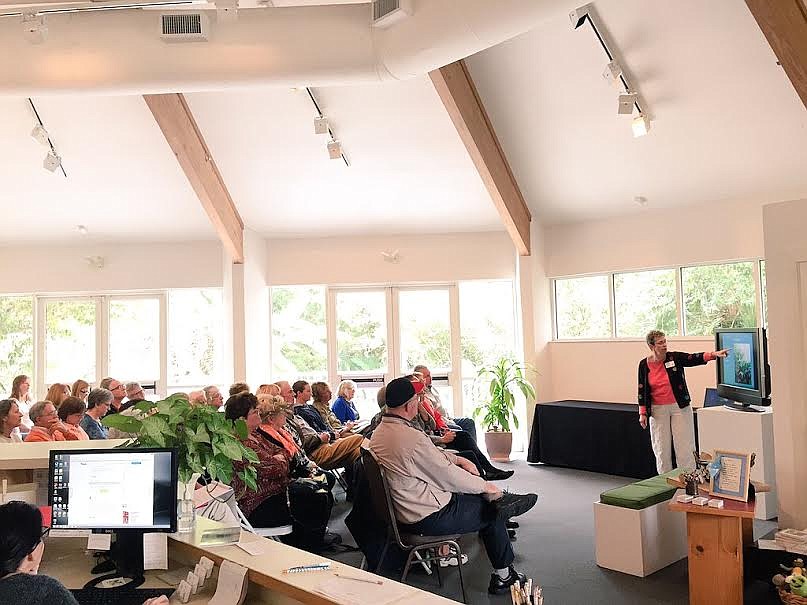- May 2, 2024
-
-
Loading

Loading

Master Gardener Lisa Brooks reveals the basic elements for a well-designed lawn.
When Lisa Brooks began gardening, she soon discovered the her education would be a lot of trail and error.
“I moved down from Vermont, and realized everything I knew about gardening was wrong,” Brooks chuckled. “I made friends with my local nursery person. She gave me a lot of information, and I was using a lot of books. But I still had a lot of failures.”
Eventually she found her way to the Volusia County Master Gardeners program, a demanding and intensive course that partners with the University of Florida.
“People who have an interest in gardening usually have a specialty,” Brooks said. “So you’ve got the guy who loves this, and the woman who grows that. Eventually, you end up with this network of people to call on.”
Brooks has been a Master Gardner since 2011, and credits most of her knowledge to answering the phones for the “plant help line.” She gave a talk about the elements of landscape design Jan. 15 at the Ormond Memorial Art Museum.
According to Brooks, the five basic elements of landscape design are:
“I like the elements of design, because it gives you something to rely on,” Brooks said. “The brain often wants symmetry, but it’s interesting what you can do when you try to be more asymmetrical.”
Brooks urges anyone with plant questions to call the Master Gardener hotline at 822-5778.
Four basic steps for the amateur designer:
Common mistakes beginners make:
“Not making beds for plants, and just sticking plants in the ground. You got to think about the size of the plant, what it will become and what it will do during different seasons. Our slogan is: right plant, right place. You really need to know about your plant and know about your place.”
Amateur gardner creates beautiful landscape
Susan Anderson doesn’t have any professional training in landscaping or yard design. She just loves to garden.
After moving into her current home in Ormond Beach, mainland side, 11 years ago, Anderson hoped to design it to have a more manicured look than the natural design the previous owners had.
“As a southern transplant, I loved a more manicured look” Anderson said. “I’m still looking for that in my present yard. It is far from manicured. After realizing my plan of a gorgeous pool would never happen, as we sit on a large coquina rock bed, I decided to embrace what was here to enjoy.”
Her current backyard has a long wall of coquina rocks that her and her husband have filled with ferns. They started gradually clearing out areas, and making paths to wander around edged in brick filled with stones.
“Every inch was lovingly done by my husband and myself,” Anderson said. “Five years ago we cleared the largest natural area, and continued a large stone pea gravel area for a huge fire bowl.”
Anderson says her inspiration is having different areas for dining, entertaining and planting. According to her, their yard will always be a work in progress and ever changing. Some of her favorite areas include her pergola covered in butterfly vine for dining, and the fire area for sitting and reading.
“I was lucky in the beginning to meet a great gardener, John Issac of Whisperwood Farms” Anderson said. “He patiently helped with planting and educated me on so many do and don’ts. Where as I wanted an instant fix in areas, he was quick to remind me that plants don’t grow over night.”
Anderson cautions new gardeners to do their research as to what grows in their area, sun, shade, etc., before starting any landscaping job.
“Make sure you observe your area at different times of day,” Anderson said. “We are very fortunate to have wonderful local nurseries run by knowledgeable people who can help in your decision making. Plus read and attend any workshops giving by the master gardeners in your local area.”
Susan Anderson is retired from 22 years with the Volusia County Schools and calls herself a plant nut.